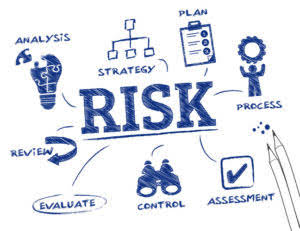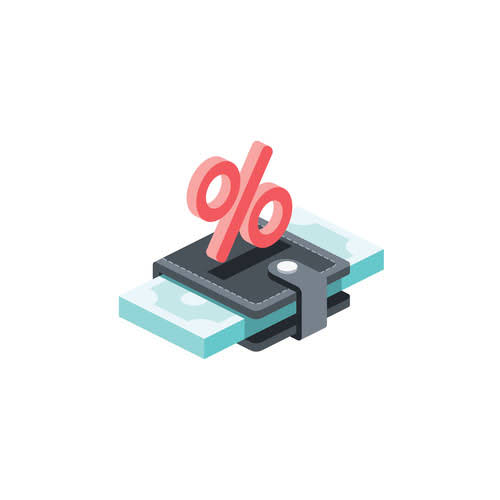
Some overhead costs remain fixed, but others escalate with increased activity. If a company relies on just-in-time inventory, increased production could require adjustments to storage capacity or distribution logistics. Businesses must weigh these factors to determine whether additional material costs justify expected revenue. If the LRIC increases, it means a company will likely raise product prices to cover the costs; the opposite is also true. Forecast LRIC is evident on the income statement where revenues, cost of goods sold, and operational expenses will be affected, which impacts the overall long-term profitability of the company. Here are some incremental cost examples based on different scales of production.

Why is Incremental Cost important for businesses?

Some businessmen hold the view that to make an overall profit, they must make a profit on every job. Consequently, they refuse orders that do not cover full cost (labor, materials and overhead) plus a provision for profit. Incremental reasoning indicates that this rule may be inconsistent with profit maximization in the short run. A refusal to accept business below full cost may mean rejection of a possibility of adding more to revenue than cost. When the more effective innovation is also the more costly, the decision maker must decide if the greater effectiveness justifies the cost of achieving it. This is done by calculating an incremental cost-effectiveness ratio, or ICER.
- Only point E is cost-effective because the reduction in costs per unit reduction in effectiveness is sufficiently high.
- The fixed costs don’t usually change when incremental costs are added, meaning the cost of the equipment doesn’t fluctuate with production volumes.
- Incremental cost is choice-based; hence, it only includes forward-looking costs.
- If a business is earning more incremental revenue (or marginal revenue) per product than the incremental cost of manufacturing or buying that product, the business earns a profit.
Understanding Contribution Margins

Each intervention is compared to the next most effective alternative by calculating the incremental cost-effectiveness ratio. Extended dominance rules out any intervention that has an incremental cost-effectiveness ratio that is greater than that of a more effective intervention. The decision maker prefers the more effective intervention with a lower incremental cost-effectiveness ratio.

Cost of Investing in New Equipment
It is closely related to Marginal Revenue, which is the revenue generated from selling one additional unit. In this article, we will explore the definition, calculation, and limitations of Marginal Cost, and discuss how it is used by businesses in the real world. Incremental costs (or marginal costs) help determine the profit maximization point for an organization. If a business is earning more incremental revenue (or marginal revenue) per product than the incremental cost of manufacturing or buying that product, the business earns a profit. When calculating incremental costs related to investing in new equipment, businesses should also consider any potential revenue or savings that may result from the investment.
- The new product only added some extra cost to define ‘X’ as the primary user and ‘Y’ as the incremental user.
- This cost represents the difference between the cost of producing the last unit and the cost of producing the next unit within a given range of production levels.
- When the choice is between an innovation and standard care, the analyst first applies the principle of strong dominance.
- Incremental cost calculations reveal invaluable insights for production, pricing, make vs. buy decisions, and more.
- Gray AM, Clarke PM, Wolstenholme JL, & Wordsworth S. Applied methods of cost-effectiveness analysis in healthcare.
- Incremental cost is usually computed by manufacturing entities as a process in short-term decision-making.
- On the other hand, you would be limiting your profit per loaf sold, and you would need to sell for more than your Marginal Cost of $5 in order to make any profit at all.
- By calculating incremental cost, businesses can determine the most profitable level of production and adjust their operations accordingly.
- Say goodbye to baseline cost, because we’re subtracting it like a bad habit.
- Being able to accurately calculate cost of capital and the incremental effects of issuing more equity or debt can help businesses reduce their overall financing costs.
Labor market conditions, such as tight labor supply or regulatory changes like wage increases, can raise labor costs. Businesses must monitor these variables to manage incremental costs effectively. In this type of pricing, the selling price of a product is determined by the variable cost, and not kept according to the overall cost of creating the product.

Examples of Incremental Cost Calculations
Similarly, if the ICER falls in cell B, the intervention is dominated by the control because it is less effective and more costly. The Management Dictionary covers over 1800 business concepts from 5 categories. Marginal Cost might seem like an academic concept, but it is actually widely used in the real world. From pricing strategies to public policy, the insights derived from analyzing Marginal Costs are instrumental in optimizing resource allocation and maximizing societal welfare. While the company is able to make a profit on this special order, the company must consider the ramifications of operating at full capacity. The company is not operating at capacity and will not be required to Grocery Store Accounting invest in equipment or overtime to accept any special order that it may receive.
- The method incorporates accounting and financial information in the decision-making process and allows for the projection of outcomes for various alternatives and outcomes.
- They are always composed of variable costs, which are the costs that fluctuate with production volume.
- Each value of the ICER represents two points in the plot of cost vs. effectiveness.
- If no excess capacity is present, additional expenses to consider include investment in new fixed assets, overtime labor costs, and the opportunity cost of lost sales.
- However, suppose, if there is idle capacity, which can be, utilized to execute this order then the order can be accepted.
- To calculate incremental cost, companies compare the cost of producing the first unit with the cost of producing the additional unit.
► The task force also described methods of estimating the statistical significance of cost-effectiveness findings. Note that when cost-effectiveness is a primary study hypothesis, variance in incremental cost definition costs and outcomes, along with their covariance, will affect the sample size. The goal of cost-effectiveness analysis to determine if the value of an intervention justifies its cost. Cost-effectiveness involves more than determining cost, it also involves assignment of a value to the outcome. In the real world, decision-makers don’t consider Marginal Cost in isolation. Instead, they compare it to Marginal Revenue, which is the extra revenue generated from selling one more unit of a product.
Incremental Cost vs. Marginal Cost
A turning point in the rise of a company’s incremental cost of capital happens when investors avoid a company’s debt due to worries over risk. Unfortunately, this can result in investors pulling back from the company’s shares due to worries over the debt load or even dilution how is sales tax calculated depending on how additional capital is to be raised. The incremental cost-effectiveness ratio is a way of investigating whether an intervention yields sufficient value to justify its cost. We compare the treated group to the control group, and find the difference in average cost, and differences in average effectiveness. The recommended measure for effectiveness is the Quality Adjusted Life Year (QALY), which reflects quality and quantity of life. It is for this reason that the PHS Task Force recommended that cost-effectiveness studies use the Quality-Adjusted Life Year (QALY) as the outcome measure.
Like in the above example, it is evident that the per-unit cost of manufacturing the products has decreased from ₹ 20 to ₹ 17.5 after introducing the new product line. Identifying such costs is very important for companies as it helps them decide whether the additional cost is in their best interest. In this case, each additional unit costs $50 ($500 divided by 100 units), making it easier for ABC Manufacturing to evaluate the profitability of the promotional campaign. This means the cost of production to make one shirt is at $10 in your normal production capacity. Cost-effectiveness analysis is not uniformly applied in the healthcare system.

